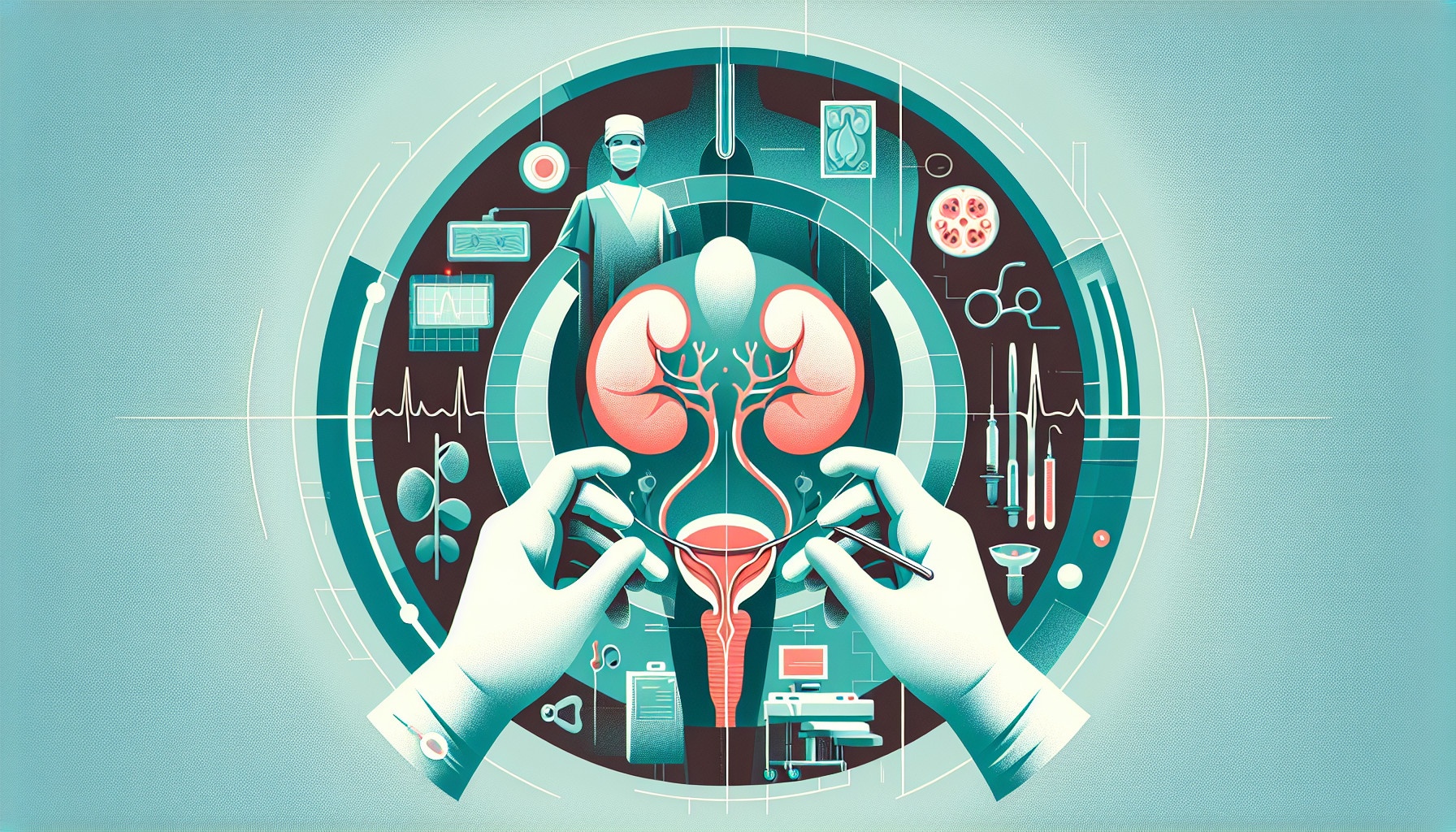Our Summary
This research paper reviews the various types of surgeries that redirect the flow of urine (known as urinary diversion surgeries) usually after bladder removal, often due to cancer. These surgeries can be difficult to evaluate with imaging technology, but CT scans are most commonly used. Therefore, it’s important for medical professionals to understand the main surgical methods, what to expect after surgery, and how to best use imaging technology to diagnose and assess any complications early. The paper discusses both early and late complications that can occur after urinary diversion surgeries.
FAQs
- What are the main types of urinary diversion surgeries discussed in this research paper?
- How does imaging technology, specifically CT scans, assist in the evaluation of urinary diversion surgeries?
- What are the potential early and late complications that can occur after urinary diversion surgeries?
Doctor’s Tip
One tip a doctor might give a patient about bladder surgery is to follow all post-operative care instructions closely to ensure proper healing and reduce the risk of complications. This may include proper wound care, taking prescribed medications as directed, attending follow-up appointments, and avoiding activities that could put strain on the surgical site. It’s also important to communicate any concerns or changes in symptoms to your healthcare provider promptly.
Suitable For
Patients who are typically recommended bladder surgery include those with bladder cancer, neurogenic bladder dysfunction, bladder diverticula, bladder stones, interstitial cystitis, and bladder outlet obstruction. In particular, patients with advanced bladder cancer may require a cystectomy, which is the surgical removal of the entire bladder. After a cystectomy, urinary diversion surgery is necessary to redirect the flow of urine from the body.
Patients with neurogenic bladder dysfunction may also benefit from bladder surgery to improve bladder function and prevent urinary incontinence. Bladder diverticula, which are pouches that form in the bladder wall, may require surgical intervention to prevent complications such as recurrent urinary tract infections or urinary retention.
Bladder stones, which are mineral deposits that form in the bladder, may require surgery if they are too large to pass through the urinary tract. Interstitial cystitis, a chronic bladder condition characterized by bladder pain and urinary frequency, may also be treated with bladder surgery in some cases.
Patients with bladder outlet obstruction, which is a blockage that prevents urine from leaving the bladder, may require surgery to alleviate symptoms and improve urinary flow. Overall, bladder surgery may be recommended for a variety of conditions that affect the bladder and urinary tract, and it is important for patients to discuss their treatment options with a healthcare provider to determine the best course of action.
Timeline
Before bladder surgery:
- Patient undergoes thorough medical evaluation and imaging tests to determine the need for bladder surgery.
- Patient may need to stop taking certain medications and follow specific pre-operative instructions.
- Patient meets with their surgical team to discuss the procedure, potential risks, and post-operative care.
- Surgery is scheduled and patient may need to stay overnight in the hospital for pre-operative testing.
After bladder surgery:
- Patient wakes up in the recovery room and is closely monitored for any complications.
- Patient may have a catheter in place to drain urine and may experience pain, discomfort, and fatigue.
- Patient is gradually allowed to start drinking and eating as tolerated.
- Patient is encouraged to move around and start walking to prevent blood clots and promote healing.
- Patient may need to stay in the hospital for a few days to a week, depending on the type of surgery and individual recovery.
- Patient is discharged home with instructions on how to care for the surgical incisions, manage pain, and monitor for any signs of infection or complications.
- Follow-up appointments are scheduled with the surgical team to monitor healing and discuss any concerns or complications.
- Patient may need to undergo imaging tests, such as CT scans, to assess the surgical site and monitor for any potential issues.
- Patient may need to make lifestyle adjustments, such as dietary changes or using a new method of urine drainage, depending on the type of surgery performed.
- Patient continues to follow-up with their healthcare team for long-term monitoring and management of any complications or side effects related to the bladder surgery.
What to Ask Your Doctor
Some questions a patient should ask their doctor about bladder surgery include:
- What type of bladder surgery do you recommend for my condition?
- What are the potential risks and complications associated with the surgery?
- How long is the recovery period and what can I expect during the recovery process?
- Will I need to make any lifestyle changes or modifications after the surgery?
- How will my urinary function be affected after the surgery?
- Will I need to use a catheter or other medical devices after the surgery?
- What follow-up care will be necessary after the surgery?
- How will the success of the surgery be monitored and evaluated?
- What are the signs of potential complications that I should watch out for?
- Are there any alternative treatment options available for my condition?
Reference
Authors: Salgado-Parente A, Antolinos-Macho E, González-Huete A, García-Latorre R, Canales-Lachén E, González-Gordaliza MC. Journal: Radiologia (Engl Ed). 2023 Nov-Dec;65(6):554-567. doi: 10.1016/j.rxeng.2023.11.001. Epub 2023 Nov 11. PMID: 38049254
